2022 FLOOD: YOUR RECOVERY STORIES
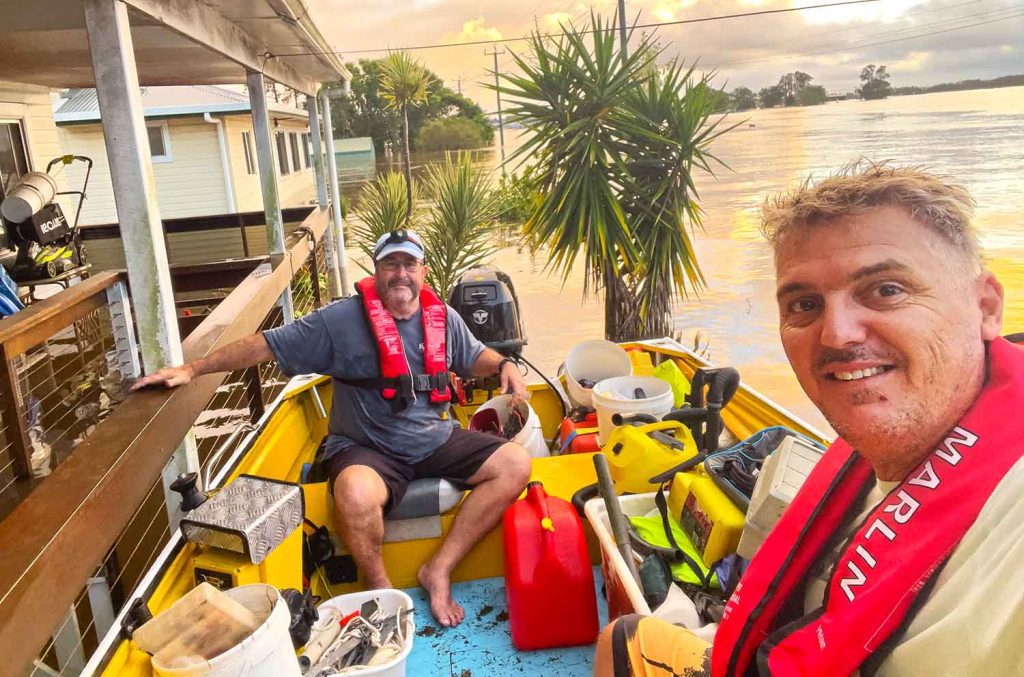
Susanna Freymark
It has taken two years for Paul Stanley-Jones to feel the flood of 2022.
His photos and videos of the disaster were published by media outlets across Australia, including IndyNR.com.
Paul has an eye for a good photo. He couldn’t stop taking photos during the floods, it is what he does, he said.
Yet today, Paul finds it difficult to look at the images he captured.
He’s been so busy repairing his Woodburn house and now that is done, he has time to think and reflect on what happened.
Despite his photos being used everywhere, we haven’t heard his story of when the floodwaters rose in Woodburn. We haven’t heard what happened in the days following the biggest flood the region has ever experienced.
The photo of Paul and his mate Geoff Larkin in a fishing boat, and other photos taken by Paul were used in the film Tinnie Heroes.
IndyNR.com met Paul at his workplace at Cape Byron Power at the Broadwater Sugarmill site last week. Eight screens span his desk showing the live-time workings of the energy plant and it’s his job to keep an eye on things.
It was where he sat two years ago on a night shift as an enormous rain cloud sat over the region dumping water into our rivers and homes. So much water.
Paul and his wife Shelly lived in Woodburn for years. Five months before the floods, they moved to a relative’s house waiting for another house to become available up the coast at Skennars Head.
The Woodburn house was rented out to a family.
Because of this waiting time for Paul and Shelly’s move, everything they owned was stored in the garage of the Woodburn home.
On February 27, the rain was heavy and relentless. Paul wasn’t worried though. He had heard the stories about the 1954 flood and he was in Woodburn during the 2017 flood.
“Never in a million years…” Paul’s voice fades. Like many people, he couldn’t believe what was to come – that the water would rise so high and homes would be drowned.
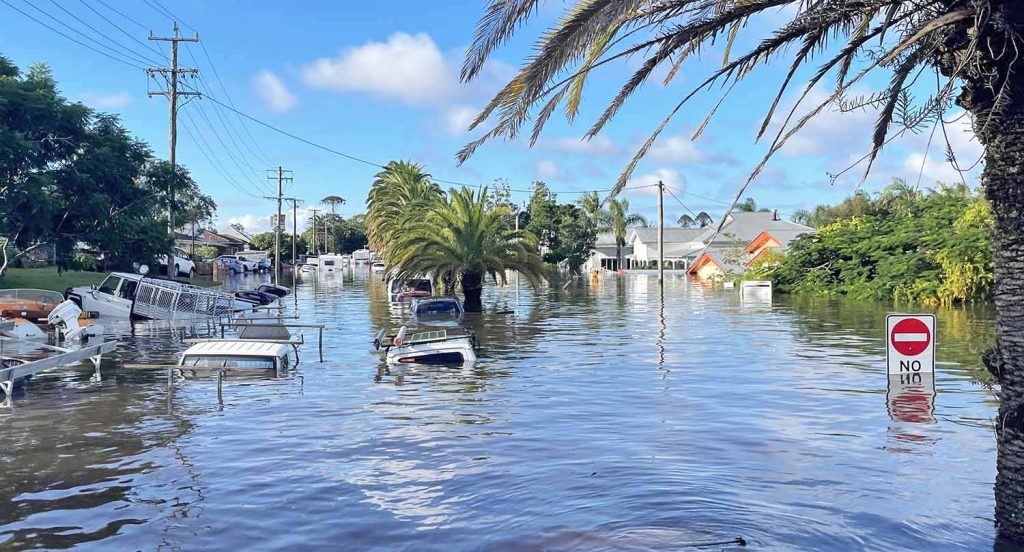
At 3am on the morning of February 28, Paul called his tenants and asked if he could come and move everything upstairs where he thought it would be safe. He arrived soon after work at 6am and they spent most of the day moving furniture upstairs.
The tenants decided to spend the night elsewhere and Paul stayed at Woodburn by himself. Shelly went to stay with family at Coolgardie.
With help from his brother-in-law, Paul lifted the washing machine and fridge up onto a high workbench in the garage. They tied the king-size bed to the ceiling of the garage with ratchet straps
“We were really proud of ourselves,” he said.
That afternoon, Paul started to worry when the local copper arrived to ask Shelly about using the Woodburn Preschool as an evacuation centre.
Evacuation centre? That sounded serious.
Water started coming into the garage.
“I was devastated,” Paul said – it had taken so much effort to move the furniture.
Paul sat upstairs in the house. The water kept rising in the garage. There were 13 steps up to the house. Water had never come into the house. Ever.
This time it was different.
Some paint and oil in the garage were knocked over by the rising water.
The power tripped.
The water kept rising.
Paul sat in darkness; the stink of paint fumes was overpowering.
And it was loud outside.
“The roar of water was like Niagara Falls,” he said.
“Like something I’d never heard before – it went on for four hours.”
Paul said he didn’t feel scared until midnight.
Suddenly the noise stopped.
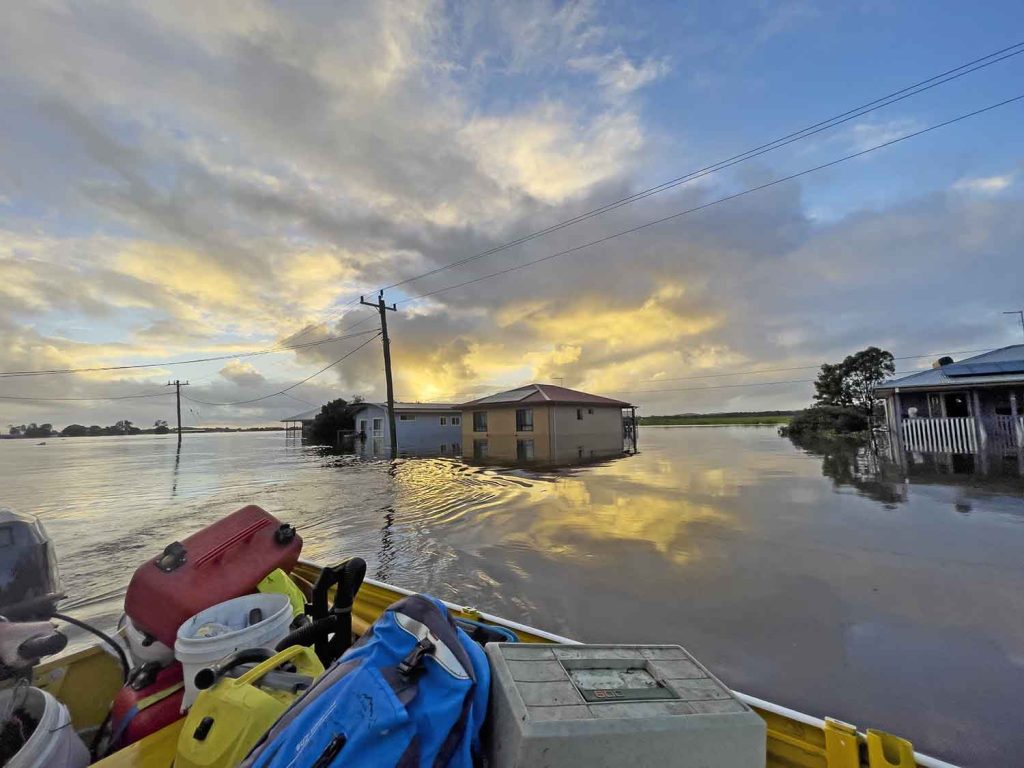
“It was as if someone turned a tap off.”
“Every half an hour I lost another step.
“Between midnight and 6am, I lost 13 steps.”
Water spilled into the top floor of the house.
“I’d been awake for 48 hours,” Paul said.
There was no time to be tired. Spiders were clinging to the walls of the house trying to escape the floodwaters.
“I rang Shelly,” Paul said.
“She rang the SES and told them ‘my husband needs to evacuate’.”
The SES advised Paul to climb onto the roof.
I was wishing, wishing, wishing for the water to stop rising, he said.
It didn’t. The sun was coming up and Paul started calling out to the boats going by.
“A couple of boats went past but they were full up.”
At 6.30am, neighbour, Geoff came in his fishing boat and rescued Paul. They headed to Woodburn Public School where everyone was congregating.

Paul didn’t rest though. His first job was to call Shelly and get the key for the preschool toolbox so he could take down the school fence that was stopping boats getting in and out of the evac centre.
He ripped the fence down.
“I hadn’t slept since Sunday – and it was Tuesday.”
The evac centre at Woodburn School was bursting with 700 people, 168 dogs, six rabbits and eight cats, Paul said.
Paul was on a SES boat helping ferry people to Evans Head RSL where there was more room.
Back at Woodburn, he helped Roy set up the paramedic station.
“There were dog bites,” he said.
Woodburn police officer Senior Constable Adam Bailey asked Paul to go around and make a list of anyone who needed urgent medication.
“I had a massive list of what everyone needed.”
They rang the Evans Head Pharmacy and were told they needed prescriptions for the medicines. There were no prescriptions.
The decision was made to take everyone to Evans Head, Paul said. Some people weren’t happy about it.
“I saw every side of human nature – 90% were good,” he said.
There were a few moments when people were aggressive.
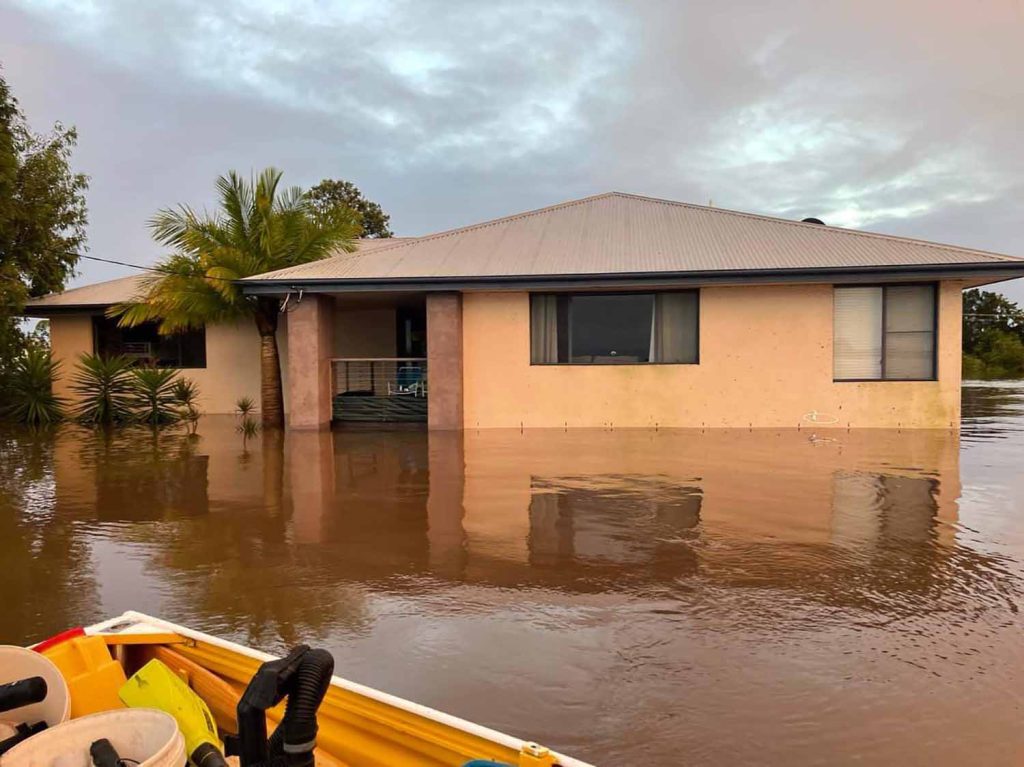
Once the floodwaters receded, Paul and Shelly threw themselves into fixing their Woodburn house so the tenants could move back in.
In between this, he was getting calls from the media. He was on ABC’s 7.30 Report and news organisations wanted his photos and videos to tell the rest of the world what was happening in the Northern Rivers.
It took nine months to fix the house.
“I spent every hour of daylight fixing the house,” he said.
When the power was back on, Paul worked at night too.
“While I was busy, I had so much to do – that was how I coped.”
It was only when Paul stopped that he had time to think about what happened.
“I was spent physically, mentally and financially.”
Yet Paul feels he was one of the lucky ones.
“I had an escape. I had friends and family I could borrow money from to repair the house. I had a rented house (at Skennars Head) to live in.”
When the tenants moved back into the house, Paul didn’t want to look at the house or photos for a while. It was too painful.
Since the flood and finishing the house, Paul has a drink every night to help him sleep. Something he didn’t do before the flood disaster.
“I cry easily too,” he said.

He is upset about the false hope flood authorities gave him.
Service NSW staff told him he was eligible for money to rebuild his Woodburn home. He was adamant he wasn’t. They insisted he was and told him to stop fixing the house because they wouldn’t pay for the work he had already done.
They kept insisting until he believed them and he filled in copious application forms. Two months later, he was told he was ineligible.
“I’m angry now about what’s not happening,” he said.
When he feels up to it, he may make a video of all his images.
For a man who can’t help but record what is happening right in front of him, and even though it may be heartbreaking to relive those days, wading through those memories may be just the thing to let go of the flood and the damage wrought on the riverside village of Woodburn.
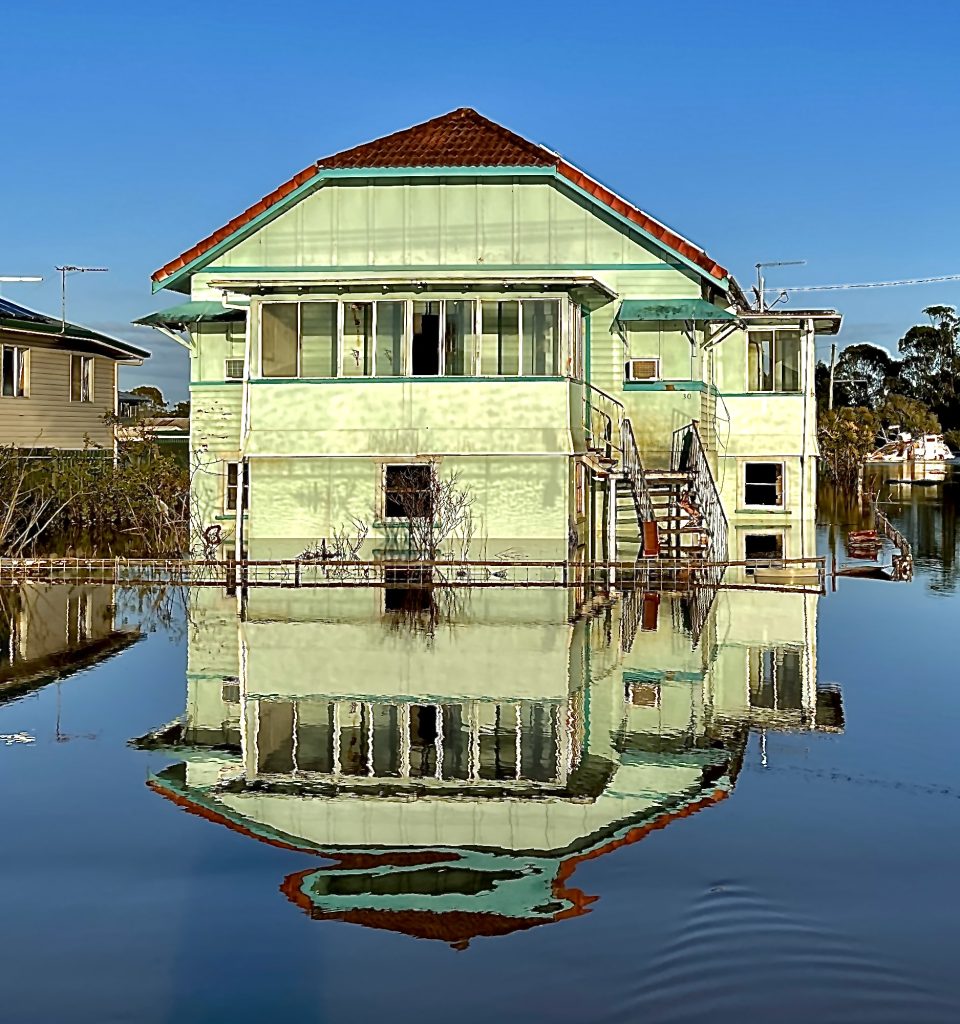
Watch the film Tinnie Heroes below.


